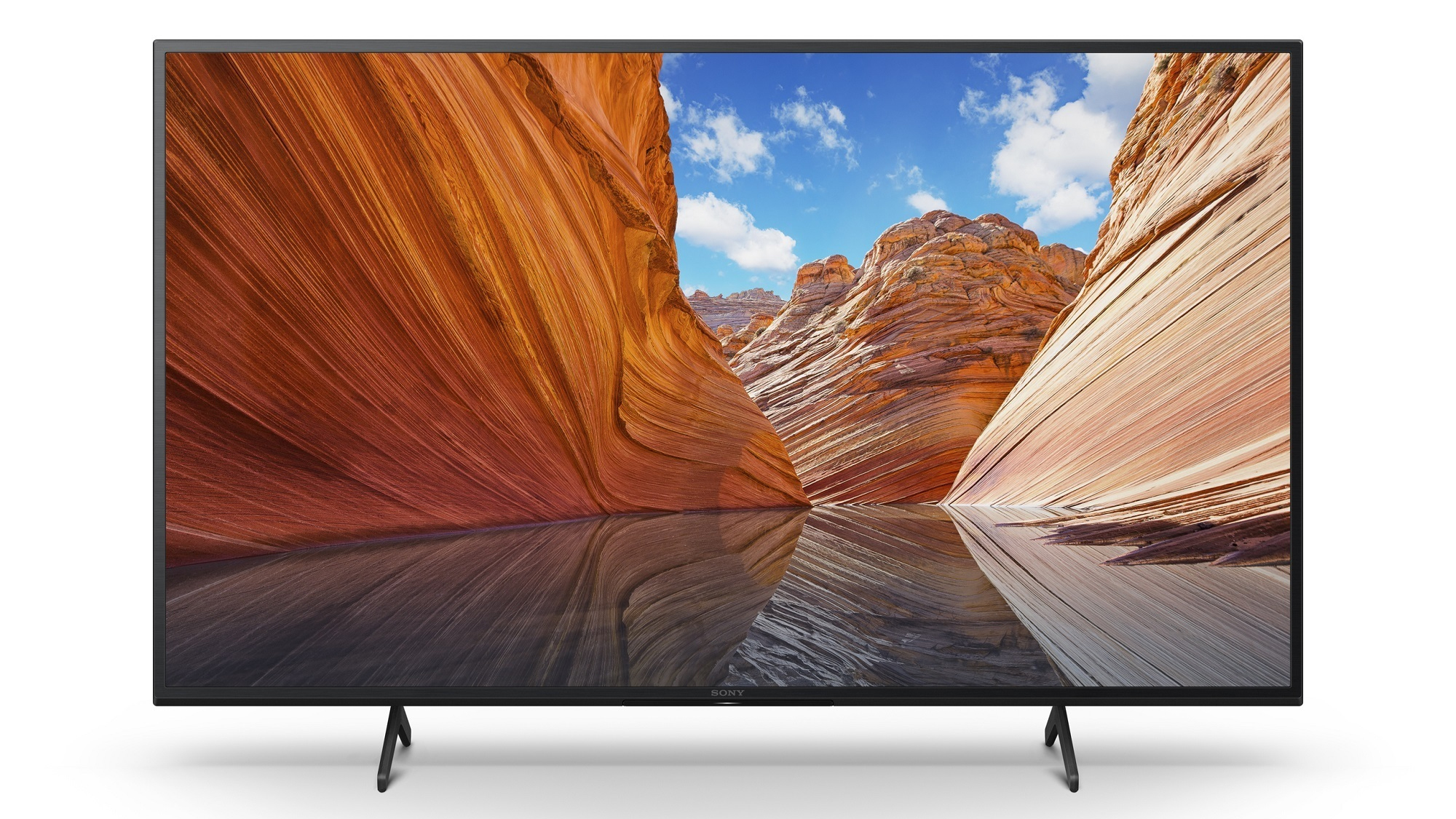Sony X80J vs Sony X85J: the differences in Sony's affordable 4K TVs explained
We compare the Sony X80J vs Sony X85J so you can see which mid-range 4K TV is the best buy for you


If you're looking for an affordable Sony TV, you might wondering about the differences between the Sony X80J vs Sony X85J. If so, you’re in the right place, as we’ve taken the trouble to summarise all the key differences between these mid-range 4K TVs, with the aim of making your buying decision that little bit easier.
While they don’t have the same advanced tech as higher-end models among the best Sony TVs – such as the Sony X90J or superb OLED A90J, they’re still formidable mid-range choices, with cheaper price tags to match.
Without further ado, let’s dive into the main differences between both sets. And if you’re not totally set on Sony, there’s also our round-up of the world’s best 4K and 8K TVs to look through, with other great options from Samsung, Philips, LG and more.
Sony X80J vs Sony X85J: price and models
Both the X80J and X85J are available in the same screen size options, with the X80J being cheaper across the board (and we’ll get into why that’s the case in the following section).
The smaller 43-inch X80J has an official price of £649 / $749 / AU$1,095. Bump up to 50 inches and you’re looking at £699 / $699 / AU$1,295. The 55-inch model will set you back £759 / $799 / AU$1,395, while the 65-inch costs £949 / $999 / AU$1,795. At the top end of the size/price scale is the 75-inch version, which can be snapped up for £1,199 / $1,399 / AU$2,495.
In comparison, the 43-inch X85J has an official of £799 / $599 / AU$1,295, while the 50-inch costs £789 / $849 / AU$1,495. The 55-inch version is listed at £839 / $999 / AU$1,595, and the 65-inch costs £1,099 / $1,199 / AU$1,995. The 75-inch model shoots up to £1,449 / $1,799 / AU$2,995, while the largest 85-inch set costs a substantial £2,249 / $2,499 / AU$4,695.
Of course, both models have received lots of discounts, so you won't necessarily need to pay the prices listed above. Here are the current lowest prices for both models drawn from across the web:
Get all the latest news, reviews, deals and buying guides on gorgeous tech, home and active products from the T3 experts
Across the board, the X85J is clearly noticeably more expensive at all screen sizes – enough to certainly worth considering the cheaper X80J model if you’re looking to save some money. You obviously get what you pay for though, and the X85J does have several key reasons to justify its higher price tag, including the image quality and the future-proofing for gamers. Let's get more into that now.
Sony X80J vs Sony X85J: picture quality

The Sony X85J has notably better contrast, but has its downside too…
One key component of a TV’s picture prowess is its imaging processor. In this instance, both the X80J and X85J are powered by Sony’s X1 4K HDR chip, which uses an algorithm that works behind the scenes to cut noise and boost detail. Pixels across multiple frames are analysed and sharpened in real time with the aim of making scenes clearer, smoother, and more natural, finding the best hue, saturation and brightness for each pixel.
Combined with Sony’s Triluminos Pro tech which shows a wider range of colours to ensure differentiation between subtler shades, things are clearly even on the processing front. But it’s the different panels used for the actual screens themselves that will differentiate the two models.
The Sony X80J has an ADS panel (a modified IPS panel) while the X85J features a VA panel. The upshot of this is that the X85J has superior contrast, and as a result, a better, punchier, more enjoyable image.
However, while the X80J’s picture is therefore ‘flatter’ when it comes to the contrast between bright areas and dark areas, its panel type benefits from wider viewing angles, which means the picture stays true even if you’re not directly in front of it.
For most people, who will be sitting directly in front of their TV, the X85J obviously has the upper hand, as it’ll have a better overall picture, with greater depth and quality. If your layout means that some people will be watching from an angle though, then the X80J’s panel makes the most sense, as it’ll save side-viewers from an unpleasant, distracting viewing experience.
Sony X80J vs Sony X85J: sound quality
Neither model benefits from the Acoustic Multi Audio sound found in more expensive Sony TV sets like the X90J. Instead, both the X80J and X85J feature Sony’s X-Balanced speaker setup which claims to offer high sound quality and powerful pressure, for a richer and more rewarding listening experience.
Marketing buzzwords aside, the speakers in both TVs offer solid frequency response with clear dialogue and get comfortably loud. As expected though, you can’t fake a dedicated sub, so the bassy low end will be too weak for any serious movie lovers. As usual for TVs in this price range, we’d recommend beefing up with one of the best soundbars or best surround sound systems.
Sony X80J vs Sony X85J: design and features

The Sony X80J's feet can be positioned at the ends or in the middle – handy if you have a smaller table.
In the flesh, you’ll be hard-pressed to find any differences in design or appearance between either the X80J or X85J. Both TVs share the same inverted V-shaped legs, which can either be placed in the middle to save space or at either end for extra flexibility, and even their remotes are identical.
On the input front, they both have four HDMI ports, but on the X85J two of the four are HDMI 2.1 ports, while the X80J lacks any HDMI 2.1 support. This is a huge deal if you’re planning to use a next-gen console like the PlayStation 5 or Xbox Series X, as you can only unlock their true 4K 120Hz potential via HDMI 2.1. This means that the X80J is limited to 4K at 60Hz (though its panel doesn’t support 120Hz regardless). It’s not a deal-breaker by any means, but if you’re chasing the ultimate TV console experience, it’s absolutely worth considering, because you're future-proofing yourself if you go for the X85J.
On the smart TV software side of things, both models are powered by Google TV, which is a noticeable upgrade over the previous Android TV interface used in past Sony sets. It features a slicker home screen with multi-source content suggestions, along with Google Assistant for quick and easy navigation.
Sony X80J vs Sony X85J: verdict
The Sony X80J and X85J are two solid mid-range TVs that look practically identical in the flesh. Peer a little closer though, and you begin to see why the X85J is more expensive.
Its superior panel technology means it provides a punchier viewing experience, thanks to its increased contrast. Its 120Hz refresh rate is better than the 60Hz found in the X85J too, which, coupled with its HDMI 2.1 smarts, makes it the clear winner when it comes to next-gen gaming.
If you’re not fussed about gaming, and have a layout where people will be viewing the screen from the side, then the X80J may be the better buy however, thanks to its superior viewing angles, while saving you some cash in the process.
The right answer is ultimately up to you, depending on your needs. Either way, you’re in for a treat, as both sets will serve you well for years to come.

Esat Dedezade is a freelance writer with a penchant for all things tech, lifestyle and gaming, having worked for numerous online and print tech publications for over 10 years. Previously the editor of Microsoft News Centre Europe and deputy features editor at Stuff, he writes for GQ, Wired, Metro, Stuff, TechRadar, Trusted Reviews, Decrypt, and more, with countless trade shows under his belt to boot. Special skills of note include the power to instantly summon the perfect gif for any given situation, a vast and frightening familiarity with the strangest and most obscure corners of Reddit, and the ability to befriend any cat that happens to cross his path.